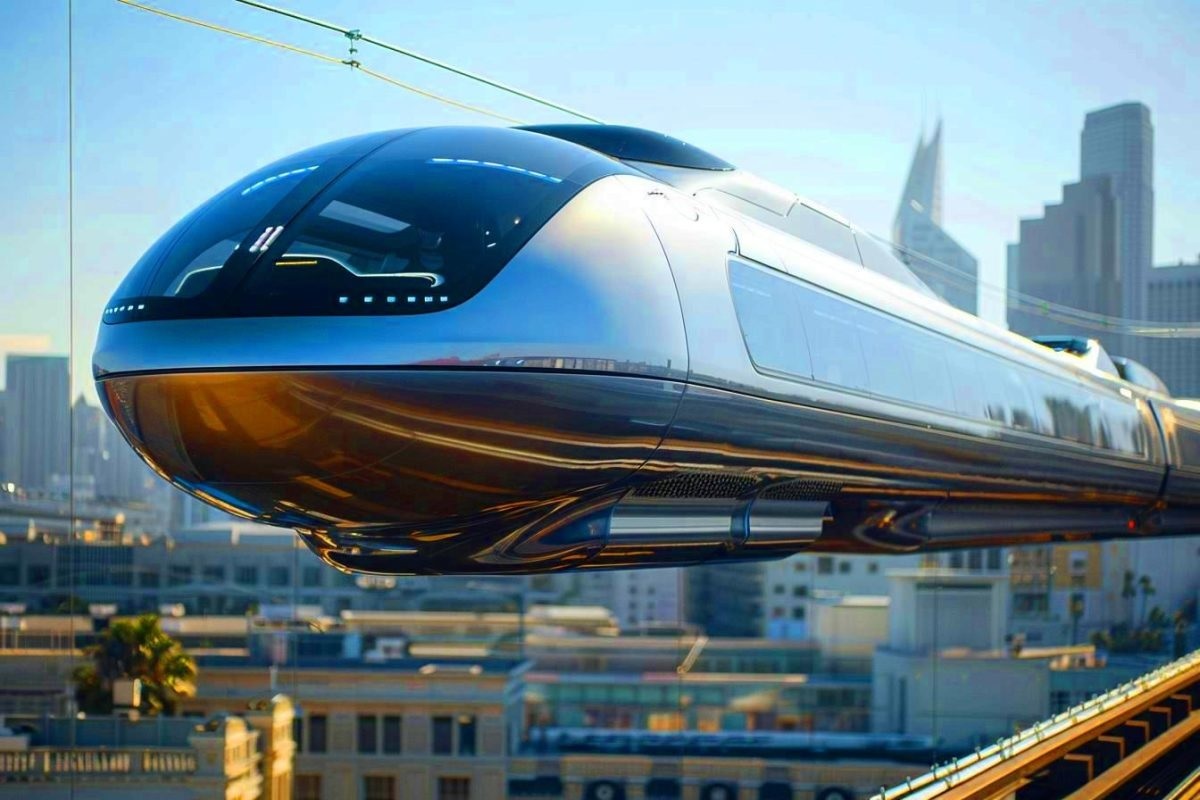A Full-Scale Trial That Rewrites the Playbook
On a newly built, 2-kilometer track in Datong, Shanxi, a Chinese prototype of a maglev Hyperloop completed its first full-scale test. The vehicle “flew” above the guideway inside a partial vacuum tube, validating simultaneous levitation, propulsion, and control.
Exact speeds remain undisclosed, but engineers suggest peaks approaching 1,000 km/h, edging the concept into near-supersonic territory. That would push well beyond today’s fastest commercial high-speed rail.
A Partnership Aimed at National-Scale Links
The test facility emerged from an alliance between the Shanxi provincial government and the China Aerospace Science and Industry Corporation (CASIC). Built at unusual speed, it signals a strategic urgency to move from laboratory rigs to real-world prototypes.
The endgame is clear: compress intercity travel across China’s megaregions. A Beijing–Shanghai sprint in about 90 minutes—versus roughly eight hours by train or five by air—would redraw the map of domestic mobility.
How the Technology Works
The system pairs magnetic levitation with a low-pressure environment that slashes aerodynamic drag. With air resistance reduced, the vehicle can maintain high speeds with less energy than would be required at atmospheric pressure.
Crucially, the tube’s vacuum integrity and real-time control are the heart of safety. Teams must detect anomalies in milliseconds, balance pressure gradients, and keep the vehicle precisely centered while traveling at jet-like velocities.
The Economics: Dazzling Potential, Difficult Math
Every Hyperloop vision collides with the same question: can it scale economically? A sealed, continuous tube network with dedicated stations demands costly civil works, precision manufacturing, and rigorous operations.
Early figures in China point to multibillion-euro investments, with some scenarios hovering near €15 billion for initial corridors. The project’s viability will hinge on utilization, maintenance costs, and whether cargo and passenger demand can fill capsules all day long.
Safety and Maintenance at Speed
Operating at near-vacuum pressures complicates evacuation, rescue, and redundancy. Any long tube must be segmented with isolation valves, have pressure-safe vestibules, and support rapid response to faults.
Maintenance cycles could be intense. Fine-tuned alignment, seal inspections, and component replacement at high frequency will be essential to keep uptime—and public confidence—high.
Environmental Footprint and Energy Use
On paper, a high-throughput Hyperloop could beat short-haul aviation on emissions, provided the grid is increasingly powered by renewables. Lower drag at speed translates to meaningful energy savings per passenger-kilometer.
Yet construction carries its own footprint. Long corridors, access roads, and materials have embodied carbon that must be repaid over years of high utilization to yield a net environmental win.
Disrupting the Skies—or Complementing Them?
If China can deliver a network at scale, airlines may see short-haul routes cannibalized, especially between cities under 1,200 km apart. Hyperloop’s advantage grows when it can connect city centers directly, bypassing airport transfers.
Still, aviation retains strengths in flexibility, existing infrastructure, and international reach. The likeliest outcome is not replacement, but a rebalancing: aircraft for longer hops; high-speed ground systems for dense, predictable corridors.
Voices From the Test Track
“This is no longer science fiction; it’s systems engineering at velocity. The question now isn’t if it can move fast—it’s if it can move a nation.”
The challenge ahead lies less in raw speed than in making speed routine, safe, and affordable at continental scale.
Integration With What Already Exists
China’s high-speed rail backbone is a global benchmark. Any Hyperloop deployment must avoid duplication and instead fill gaps where speed yields outsized benefits—such as ultra-dense, high-demand city pairs and time-critical logistics.
Interoperability touches everything: ticketing, security, last-mile connections, even freight interfaces. The smoother the transition from train or metro to tube, the stronger the value proposition.
What to Watch Next
- Regulatory frameworks for vacuum transport, emergency protocols, and certification.
- Demonstrations of safe, reliable operations beyond 500 km/h in longer test tracks.
- Transparent cost models for tube construction, power systems, and maintenance.
- Energy sourcing and integration with renewable capacity.
- Revenue strategies: premium business travel, high-value cargo, and interline partnerships.
- Public acceptance, route alignments, and environmental impact assessments.
A Cautious Verdict
China’s full-scale test is a milestone: a rare convergence of engineering ambition, state backing, and industrial capacity. It reframes near-term possibilities for fast, low-friction ground transport.
But the hardest work begins now—turning a dazzling prototype into daily service that is safe, scalable, and sustainable. If the country clears those hurdles, short-haul air travel may face its most serious challenger yet.
